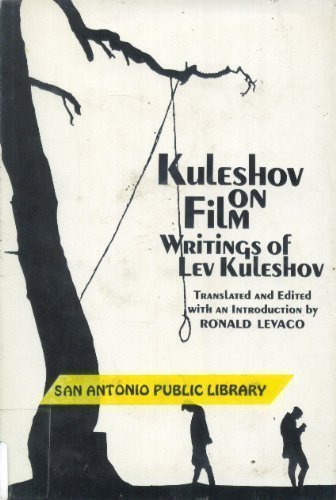Kuleshov on Film: Writings by Lev Kuleshov book download
Par becker dustin le samedi, mai 7 2016, 06:32 - Lien permanent
Kuleshov on Film: Writings by Lev Kuleshov by Lev Vladimirovich Kuleshov, Ronald Levaco


Kuleshov on Film: Writings by Lev Kuleshov Lev Vladimirovich Kuleshov, Ronald Levaco ebook
Format: pdf
Page: 121
ISBN: 0520026594, 9780520026599
Publisher: Univ of California Pr
It rests on the theory of montage and the effect that film editing has on evoking emotions from a viewer. Named after Lev Kuleshov, the conductor of this experiment and an influential filmmaker of the mid-twentieth century Soviet Union, the Kuleshov Effect refers to the idea that "the meaning of a shot is determined not only by the content of the shot, "Kuleshov Effect." ∇troperville. In the early 1900′s, a Russian filmmaker by the name of Lev Kuleshov came to the conclusion that two disparate shots edited one after the other are processed “together” in the minds of the audience. I always thought I was making Five Easy Pieces with a robot the whole time, and I was wrong. After seeing the montage, that would change the perception, or increase the emotion that a reader imagines? Montage is a synonym for a form of editing which was practiced by Soviet filmmakers Lev Kuleshov, Vesvolod Pudovkin, Dziga Vertov and Sergei Eisenstein around the 1920s at the Kuleshov school of film-making. The viewer was not a passive viewer, who simply marveled at the spectacle, but was an active participant in creating the meaning of the work. (The Kuleshov Effect is an early editing technique developed by Russian filmmaker Lev Kuleshov in where he would give emotional attachment to a blank face by showing something that has emotion immediately after.
Natural Language Understanding (2nd Edition) download